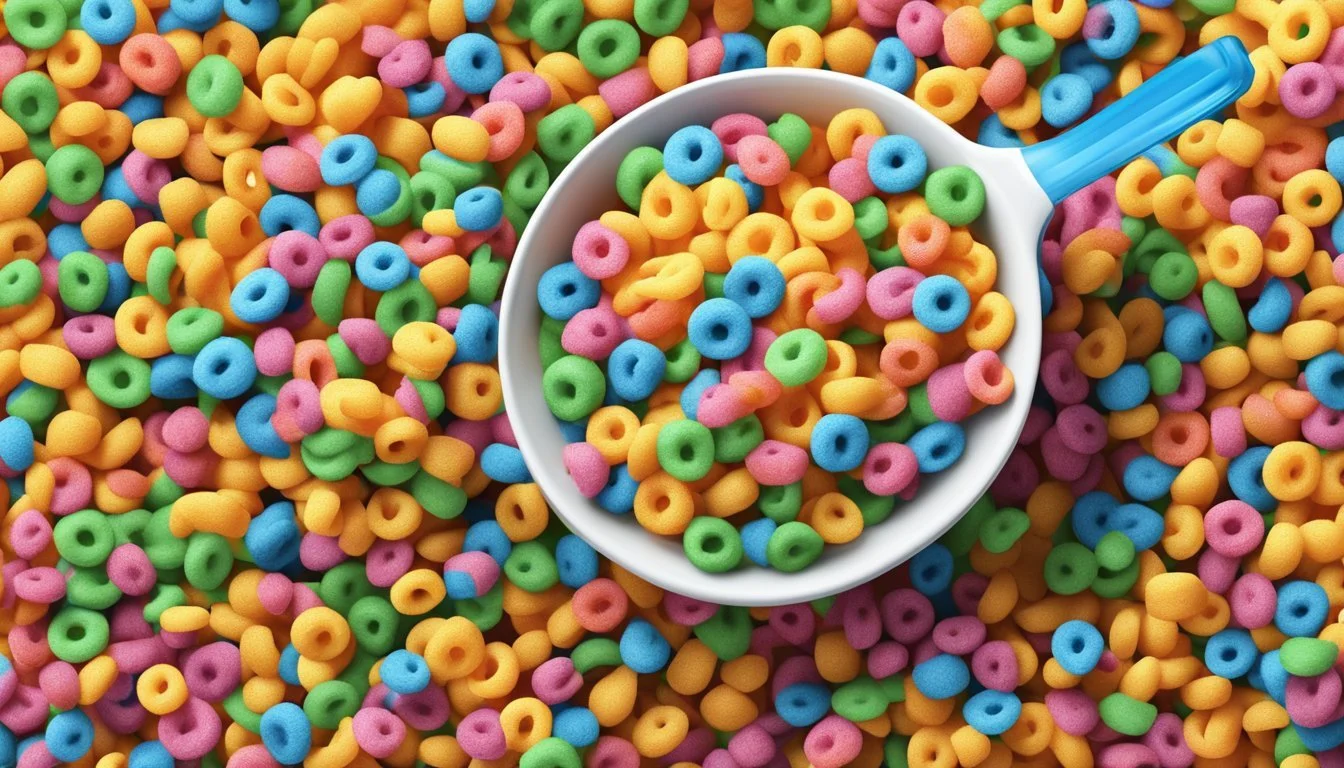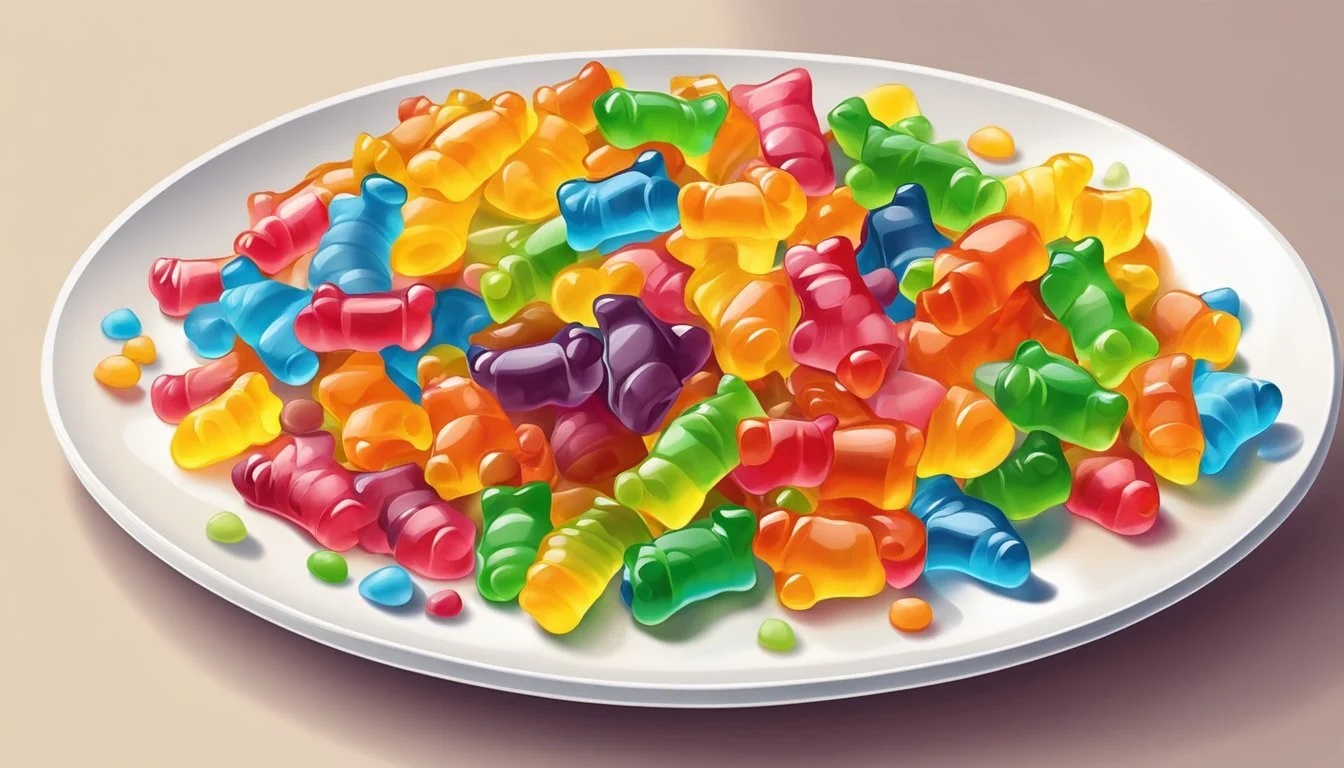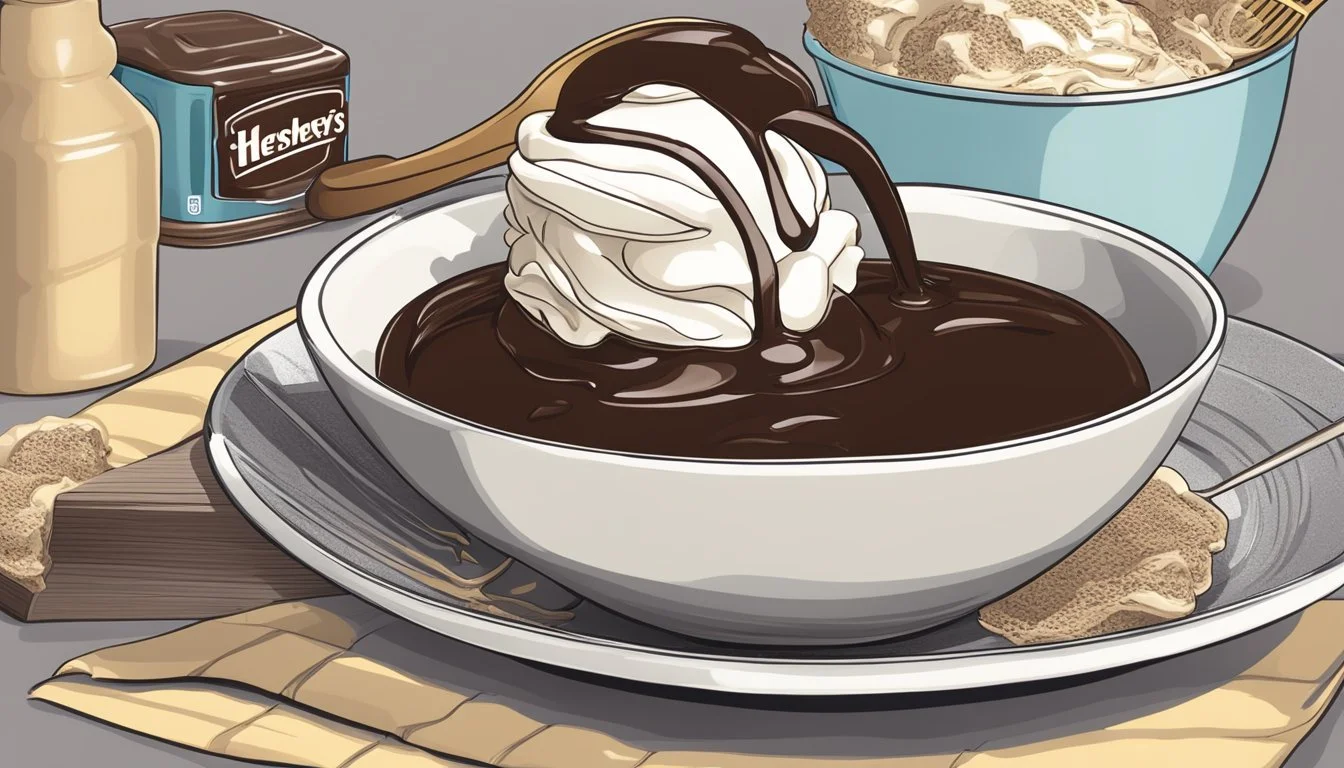Surprising Foods High in Added Sugar
Hidden Risks to Your Health
In today's world of processed and prepared foods, it is increasingly important to be aware of what we consume, particularly in terms of added sugars. With sugar often used to enhance flavors and extend shelf life, even the most unsuspecting foods can be laden with unexpected amounts. Understanding which foods are high in added sugar can help individuals make healthier dietary choices and better manage their overall health.
The consumption of added sugar has risen dramatically, making it a critical nutritional concern. Shoppers may often find that even products marketed as healthy options contain significant amounts of sugar. Recognizing these foods and their impact is essential for anyone looking to maintain a balanced diet.
1) Coca-Cola
Coca-Cola is one of the most well-known soft drinks worldwide. A standard 12-ounce can contains 39 grams of sugar, equating to approximately 10 teaspoons. This is more than 80% of the recommended daily intake for added sugar.
High sugar content in Coca-Cola primarily originates from the inclusion of both high-fructose corn syrup and sugar. These ingredients contribute to the high caloric intake, offering little nutritional value.
Coca-Cola switched from sugar to high-fructose corn syrup in the mid-1980s. By 1984, the transition was complete, making it a cost-effective alternative for the company, while maintaining the same level of sweetness.
Excessive consumption of beverages like Coca-Cola can lead to various health issues. Among them are obesity, type 2 diabetes, and dental problems. The high sugar content plays a significant role in these health risks.
2) Oreos
Oreos are a popular brand of sandwich cookies consisting of two chocolate wafers separated by a sweet cream filling. Known for their distinct taste and texture, they are enjoyed by many around the world.
One notable aspect of Oreos is their high added sugar content. A typical serving of three Oreos contains approximately 14 grams of sugar. This substantial amount can contribute to daily sugar intake if not consumed in moderation.
In addition to high sugar levels, Oreos are made with enriched flour, vegetable oil, and artificial flavors. These ingredients provide little nutritional value and are often categorized as empty calories. Consuming such foods can lead to sudden spikes and crashes in blood sugar levels, potentially triggering false hunger cues.
Oreos are also low in dietary fiber and protein. These characteristics may make them less satiating, possibly leading individuals to consume more than intended. This can be problematic for those seeking to maintain or lose weight.
Despite their high sugar content, Oreos remain a beloved treat for many. Enjoying them occasionally and in moderation can help manage added sugar intake while still satisfying sweet cravings.
3) Fruit Loops
Fruit Loops is a well-known cereal brand that is popular among both children and adults. The cereal is colorful and has a distinctive fruit-like flavor. Despite its appealing look and taste, Fruit Loops contain a significant amount of added sugar.
A single serving of Fruit Loops, which is about 29 grams, contains 10 grams of sugar. This means that over one-third of each serving is composed of sugar. Such a high sugar content can contribute to various health issues, especially when consumed regularly.
Fruit Loops also contains other processed ingredients like maltodextrin and modified food starch. These ingredients are known to have a high glycemic index, which can cause rapid spikes in blood sugar levels.
In addition to sugar, Fruit Loops has artificial colors and hydrogenated vegetable oils. These additives often raise concerns about the long-term health effects, making the cereal more of a treat than a healthy breakfast option.
4) Nutella
Nutella, a popular hazelnut spread, is often favored for its rich and creamy texture. The spread combines hazelnuts with cocoa and sugar, which gives it a sweet flavor that appeals to many.
A critical look at Nutella's ingredients reveals that its primary component is sugar. One serving, which equals two tablespoons, contains about 21 grams of sugar, including 19 grams of added sugars.
The presence of hazelnuts in Nutella does contribute some nutritional benefits, such as healthy fats, antioxidants, and vitamins. However, these advantages are overshadowed by the high sugar content.
Consuming high amounts of added sugar is associated with several adverse health outcomes. These include increased risks of diabetes and cardiovascular diseases. Therefore, Nutella's high sugar content makes it a product that should be consumed in moderation.
5) Gummy Bears
Gummy bears are a popular candy that is notably high in added sugar. A typical serving, which is about 17 or 18 pieces, contains between 21 and 22 grams of sugar.
The American Heart Association suggests that women consume no more than 6 teaspoons of sugar each day and men no more than 9 teaspoons.
A serving of gummy bears translates to about 5.25 to 5.5 teaspoons of sugar. This means that consuming just one serving can nearly meet the daily recommended sugar intake for women.
Gummy bears primarily derive their sweetness from ingredients like glucose syrup and sucrose. Glucose syrup, usually made from wheat or corn, is a concentrated source of glucose.
The presence of added sugars and other sweeteners makes gummy bears a less-than-ideal choice for those looking to limit their sugar consumption.
While there are healthier alternatives available, such as gummy bears sweetened with sugar substitutes like Stevia, the classic versions remain high in added sugars.
Consumption of gummy bears can contribute to health risks associated with excessive sugar intake, such as weight gain and increased risk of diabetes.
Therefore, it's important to be mindful of portion sizes and frequency when indulging in this sweet treat.
6) Starbucks Frappuccino
Starbucks Frappuccinos are popular for their blend of coffee, milk, ice, and various flavors. These drinks are known for their high sugar content.
The Mocha Cookie Crumble Frappuccino stands out, containing 55 grams of sugar and 480 calories in a grande size. Another popular choice, the Caramel Frappuccino, offers 54 grams of sugar and 380 calories for the same serving.
Frappuccinos often include syrups and whipped cream, which contribute to their sweet taste. Many syrups and toppings used are highly sugary, adding to the overall sugar load.
Opting for plant-based milk options like almond, soy, or oat can reduce calories and dairy content, but the sugar level in the syrups and other ingredients remains significant. Avoiding whipped cream can also help lower the sugar content slightly.
Consumers looking to reduce their sugar intake without giving up their favorite frappes should be mindful of the specific ingredients and modify their orders accordingly.
7) Mountain Dew
Mountain Dew is known for its high sugar content. A 12-ounce can of Mountain Dew contains approximately 46 grams of sugar. This level of sugar significantly exceeds the daily recommended limit for most people.
A 20-ounce bottle of Mountain Dew contains about 77 grams of sugar. This amount is much higher than in many other beverages, such as an 8-ounce glass of orange juice, which typically has around 22 grams.
The high sugar content in Mountain Dew can contribute to various health issues. Regular consumption of such sugary beverages can lead to weight gain, increased risk of diabetes, and tooth decay.
Mountain Dew also comes in different flavors and variations. Many of these variations have similar or even higher sugar content compared to the original. For example, Mountain Dew Code Red has 76 grams of sugar per 20-ounce bottle.
For those looking to reduce their sugar intake, Mountain Dew Zero Sugar and other diet versions offer an alternative. These versions retain the taste without the added sugar, although they contain artificial sweeteners.
When considering Mountain Dew, it's essential to be mindful of its sugar content. Making informed choices can help manage overall sugar consumption and maintain better health.
8) Hershey's Chocolate Syrup
Hershey's Chocolate Syrup is a popular topping for desserts and beverages. Known for its rich, chocolatey flavor, it is often used to enhance the taste of ice cream, milkshakes, and pancakes.
One of the primary concerns with Hershey's Chocolate Syrup is its high added sugar content. A serving of just two tablespoons contains approximately 19 grams of sugar. This is a significant portion of the daily recommended intake.
The American Heart Association suggests a maximum of 25 grams of added sugar per day for women and 37 grams for men. Consuming even small amounts of this syrup can quickly approach these limits.
In addition to sugar, Hershey's Chocolate Syrup contains high fructose corn syrup, another form of added sugar that has been linked to various health issues. These can include insulin resistance, obesity, and heart disease.
While it serves as a delightful treat, moderation is key when incorporating this syrup into one's diet. Awareness of its sugar content can help guide healthier choices.
9) Skittles
Skittles are a popular candy known for their vibrant colors and fruity flavors. Each serving of Skittles, approximately 2.17 ounces or 61.5 grams, contains around 250-260 calories.
The primary ingredient in Skittles is sugar. A serving of Skittles includes approximately 47 grams of sugar, making it high in added sugars.
Added sugars in Skittles come from several sources, including table sugar and high fructose corn syrup. These sugars contribute to the candy's sweetness but also increase the calorie content.
Skittles are gluten-free, which makes them an option for individuals with gluten sensitivities or celiac disease. However, the high sugar content means they should be consumed in moderation.
Excessive intake of added sugars, like those found in Skittles, can lead to health issues such as weight gain and increased risk of chronic diseases. It's essential to read labels and enjoy Skittles sparingly.
10) Pop-Tarts
Pop-Tarts are a popular toaster pastry known for their convenience and wide range of flavors. They are often consumed as a quick breakfast or snack option.
One of the main nutritional concerns with Pop-Tarts is their high sugar content. A single frosted Pop-Tart pastry typically contains around 19-20 grams of sugar. This makes them a significant source of added sugars in many diets.
In addition to sugar, Pop-Tarts are also high in calories, with one pastry containing about 200-210 calories. They also contain artificial ingredients and preservatives to maintain their shelf life.
Pop-Tarts provide minimal nutritional value in terms of vitamins and minerals. While they offer a quick energy boost due to their carbohydrate content, they lack dietary fiber and are low in protein.
The high levels of sodium in Pop-Tarts also contribute to its less-than-ideal nutritional profile. Depending on the flavor, one serving can contain between 180 to 230 milligrams of sodium.
People who need to watch their sugar or sodium intake should be cautious about consuming Pop-Tarts regularly. Moderation is key when incorporating these tasty but nutritionally limited pastries into one's diet.
Health Impacts of High Added Sugar Intake
A diet high in added sugars can lead to significant health problems. These include a heightened risk of developing type 2 diabetes, increased weight gain and obesity, and various cardiovascular issues.
Increased Risk of Type 2 Diabetes
Excessive consumption of added sugars, particularly from sugary beverages, has been linked to an increased risk of type 2 diabetes. Sugary drinks like soda and sweetened coffee drinks cause rapid spikes in blood glucose levels, leading to insulin resistance over time.
Research shows that people who consume one or more sugary beverages per day have a 26% greater risk of developing type 2 diabetes compared to those who consume fewer or none. Reducing sugary drink intake can significantly lower this risk.
Weight Gain and Obesity
Consuming foods and drinks high in added sugar contributes to weight gain and obesity. High-sugar foods often contain "empty calories," providing little to no nutritional value and leading to excess calorie intake. Frequent consumption of these high-calorie, sugar-laden items can lead to an energy imbalance and increased fat storage.
Studies have demonstrated that higher intakes of added sugar are directly correlated with higher body mass indexes (BMIs) and abdominal fat. This becomes a vicious cycle, as weight gain further increases the risk of other health issues.
Cardiovascular Issues
A high diet in added sugar is strongly associated with many cardiovascular problems. Elevated sugar intake can increase blood pressure, promote inflammation, and contribute to higher triglyceride levels, all of which heighten cardiovascular disease risk.
A JAMA Internal Medicine study found that individuals consuming 17-21% of their calories from added sugar had a 38% higher risk of dying from heart disease compared to those with lower sugar intake. Monitoring and reducing added sugar can have a substantial impact on heart health.
Identifying Foods High in Added Sugar
Recognizing foods high in added sugar can be challenging due to the variety of names sugar goes by and the complexity of food labels. This section guides you through understanding food labels and identifying common ingredients that indicate added sugars.
Understanding Food Labels
Food labels hold crucial information for identifying added sugars. Look at the ingredients list for terms indicating added sugars. "Total Sugars" includes both natural and added sugars, while "Added Sugars" refers only to sugars added during processing. Foods high in added sugar often list sugars among the first few ingredients.
Reading labels for items such as cereals, sauces, and yogurts can reveal hidden sugars. Note serving sizes; a small serving might not seem harmful but adds up quickly, misleading consumers about sugar intake.
Common Ingredients to Watch For
Added sugars masquerade under numerous names. Watch out for terms like high fructose corn syrup, cane sugar, and agave syrup. These sweeteners contribute to high sugar levels. Ingredients ending in "-ose" like glucose, fructose, and dextrose are also sugars.
Other aliases include honey, molasses, and fruit juice concentrates. Be aware of ingredients like malt syrup and evaporated cane juice. Spotting these can help reduce consumption of hidden sugars in foods perceived as healthy, such as granola bars and smoothies.






